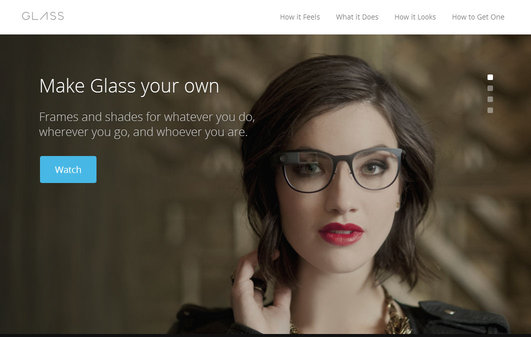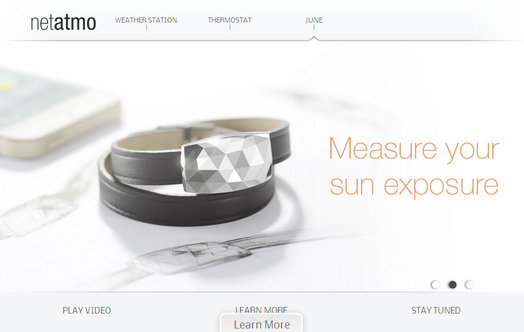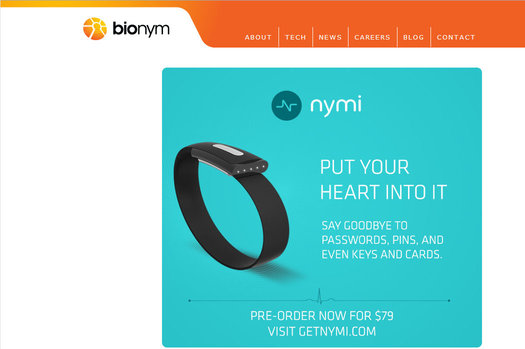2014: Goodbye to the gimmick and in with the year of truly ‘wearable’ tech?
Last year some ‘wearable’ computer gadgets appeared on the market but will the novelty wear off? Andrew Hennigan investigates
Since personal computers were first introduced in the 1980s, the trend has always been to greater mobility. First came laptops, then smartphones and then tablets. Now you can buy the first ‘wearable’ devices like Google’s Glass, Samsung’s Galaxy Gear watch and Jawbone’s UP fitness tracker. But what does this mean for people on the move and the brands targeting them with products and services?
“Whether wearable, mobile phone, tablet, or the like, all of these technologies continue to evolve,” says Facebook’s Global Head of Travel Strategy, Lee McCabe. “But the reality is that this is really an issue of mobility. Having mobility means people can discover places more quickly and get inspired to book travel. Having mobility also allows for sharing experiences and connecting with friends at a greater scale and with more immediacy than ever before.”
What McCabe is saying then is that technologies that allow for mobility help people make better decisions, and they allow smart marketers to market better.
Big names, new innovation
Best known of all the wearable devices is the GoogleGlass, which is currently only available to developers but is expected to become a commercial product this year. GoogleGlass consists of a frame, which can now carry normal prescription lenses but over one eye there is a tiny projector that projects an image directly onto the retina so the user sees a virtual display hovering in the air in front of them.

GoogleGlass can work with many travel-related apps that already exist for smartphones, like Google’s own Field Trip travel guide. But the Glass version is easier to use when you are moving around, and it leaves your hands free. Other companies are already experimenting with the Explorer edition, like Tourism Radio, a provider of location-based travel guides.
“Our vision is to integrate Tourism Radio into every facet of the travel experience,” says the firm’s content manager Jonathan Meyer. Tourism Radio’s location-aware audio travel guides know where you are and give contextually relevant information about things to see and do around you. “We are currently developing our products to work on the Google Glass platform and we’ve also formed partnerships with auto manufacturers to get Tourism Radio travel guides into vehicles across the world.”
Google isn’t the only player in the smart glasses business and others are taking very different approaches. Vergence Laboratories Epiphany Eyewear, for example, includes a video camera and microphone but no display and it operates like a stylish, wearable video camera.
“Epiphany Eyewear allows you to look good filming your life moments from your own personal point of view – like GoPro for glasses,” says Cory Grenier, who is the company’s director of marketing & sales. During the first month of release, customers had uploaded “amazing” point-of-view videos kayaking, climbing Mount Shasta or simply capturing a California sunset.
Epiphany eyewear can record video for up to one hour and charges in 35 minutes. Memory built into the frames can hold eight hours of HD video and videos can be uploaded to a free cloud app called YouGen TV to share through social networks.
According to Grenier, the standard version ships with sunglass lenses but wearers can swap these for prescription lenses. Epiphany Eyewear also emphasises style, a critical design feature for wearables.
Watch this step
Smart watches have been on the market longer but adoption has been quite slow. One of the most successful, the Samsung Galaxy Gear smart watch, works with a smartphone to put some features on your wrist.
“Wearable technology has many benefits as business and leisure travellers are using these devices to check weather forecasts, managing their daily schedule, downloading the latest travel news on the commute to work or the departures board at the airport,” says James White at Samsung Electronics UK & Ireland. This watch has a camera, which means that people can, in theory, capture moments they want to remember straight away, while they are on the move; it also has navigation features.
Going further still with the idea of a wearable device is Netatmo’s June, a bracelet that measures sun exposure and gives the wearer personalised sun protection advice. It tracks the UV light intensity in real time and measures total sun exposure throughout the day. Depending on your skin type it calculates a suggested maximum daily exposure and determines the recommended sun protection, whether it is applying cream, wearing a hat or seeking out shade.

Like other wearables, June emphasises style. “June is meant to be used in everyday life,” says Raphaëlle Raymond, product manager at Netatmo. But there could be a business benefit too. “Businesses in travel and tourism can promote safe holidays by increasing the awareness of protection while in the sun.”
Devices with purpose
Other startups are aiming to create a more general-purpose wearable platform that can be used by different apps. Kiwi’s Move has a motion sensor enabling a wearer to track their daily activities – just like fitness trackers – but at the same time it can be used for gesture control to interact with other devices and a microphone to record sound or hear voice commands.
“We’re expanding the wearable concept to go beyond enabling you to not only track your motions and activities, but also to use it as an interface device,” says Kiwi co-founder and VP Marketing Ashley Beattie. The idea is that you will be able to wave your hand to turn on a smart TV or just say the word ‘lights’ and the will switch on.
For travellers, Kiwi could arguably be useful for monitoring activities, to get help in an emergency and to interact with Kiwi-enabled hotels so that just arriving would provide the hotel with the necessary information, without needing to pull out a smartphone. “You could also attach a Kiwi to your luggage,” says Beattie, “then get a message on your smart phone if anyone moves it.”
Bionym’s Nymi wristband goes one step further. Not only can it track the movements of the wearer, it can also identify the wearer based on their unique cardiac rhythm. Nymi is able to communicate this identity securely to other devices that the user interacts with. “Nymi is the only wearable device focused on biometric authentication,” says Andrew D’Souza, president of Bionym. In addition it provides motion data meaning it can be programmed for gesture or activity tracing, essentially creating an app platform.

“Think about all the times you need to use your identity,” says D’Souza. “From booking tickets to check in, security, room access, boarding passes and purchases, Nymi can make all these just disappear. Walking into a restaurant and them knowing your name and dietary preferences, or a retailer who already knows what you’re shopping for – these are the experiences were looking to create.”
It sounds promising but there are potential risks; could it, for example, be a step too far for some customers who may feel their privacy has been compromised.
The year of wearables?
With both giants like Google and many startups bringing wearable devices to the market, there will be plenty of gadgets for early adopters to test, but will 2014 really be the year of the wearable device?
Wearables are just in their infancy and so far we haven’t yet seen the killer application that will make them mainstream but for D’Souza, “there’s a good chance we will see some signs of those this year”.
Beattie is even more confident and thinks that 2014 will definitely be the year of wearables, at least from a mainstream awareness perspective. “We believe that 2014 is the year when wearables will really demonstrate value proposition to consumers and help people reduce complexity in their lives.”
This remains to be seen. Do people for example, really need a smart watch and a smart phone? Do they really want a restaurant to know what their dietary requirements are before they have even walked in the door? One thing seems certain, ‘wearables’ need to go beyond the novelty phase and they need to serve a real purpose, if they are going to become mainstream.
Lee McCabe, Facebook’s head of travel, will be speaking in San Francisco at Social Media in Mobile Strategies for Travel, 2014 (March 17-18)

